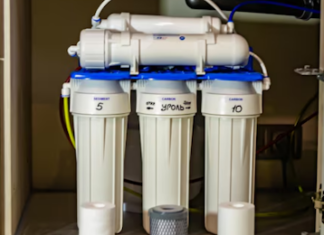Introduction
In the realm of climate change discussions, the focus is often on greenhouse gases like carbon dioxide (CO2), methane (CH4), and nitrous oxide (N2O) due to their role in trapping heat in the Earth’s atmosphere. However, there are other gases known as non-greenhouse gases that are equally important to understand and monitor. These gases may not contribute directly to the greenhouse effect, but they can still have significant impacts on the environment and human health. This article aims to delve into the world of non-greenhouse gases, identifying key players, sources, effects, and strategies for mitigation.
Understanding Non-Greenhouse Gases
Non-greenhouse gases are substances that do not have the same heat-trapping properties as traditional greenhouse gases. While they do not contribute directly to global warming or climate change through the greenhouse effect, many of these gases have detrimental effects on air quality, human health, and the environment. Some non-greenhouse gases are naturally occurring, while others are products of human activities such as industrial processes, agriculture, and transportation.
Common Non-Greenhouse Gases
- Sulfur Dioxide (SO2):
- Sources: Combustion of fossil fuels, volcanic eruptions, industrial processes.
- Effects: Contributes to acid rain, respiratory issues, and air pollution.
-
Mitigation: Use of cleaner energy sources, emission control technologies.
-
Nitrogen Oxides (NOx):
- Sources: Combustion engines, power plants, industrial processes.
- Effects: Leads to smog formation, respiratory problems, and acid rain.
-
Mitigation: Catalytic converters in vehicles, fuel quality improvements.
-
Carbon Monoxide (CO):
- Sources: Incomplete combustion of fuels, vehicle emissions.
- Effects: Reduces oxygen transport in the body, leading to health issues.
-
Mitigation: Improved engine efficiency, proper ventilation in enclosed spaces.
-
Particulate Matter (PM):
- Sources: Combustion processes, vehicle emissions, industrial activities.
- Effects: Respiratory and cardiovascular problems, reduced visibility.
-
Mitigation: Filters and scrubbers in industrial settings, cleaner fuels.
-
Volatile Organic Compounds (VOCs):
- Sources: Vehicle emissions, industrial processes, solvents.
- Effects: Contribute to smog formation, health problems, and ground-level ozone.
- Mitigation: Use of low-VOC products, better emission controls.
Impact of Non-Greenhouse Gases
While non-greenhouse gases do not directly contribute to global warming, their effects on air quality, human health, and ecosystems are significant. High levels of sulfur dioxide, nitrogen oxides, and particulate matter can lead to respiratory issues, cardiovascular problems, and environmental damage. Carbon monoxide poses a threat to human health by reducing the oxygen-carrying capacity of blood. Volatile organic compounds contribute to the formation of ground-level ozone, which can harm both human health and plant life.
Regulations and Monitoring
Governments and environmental agencies around the world have implemented regulations and monitoring programs to track and reduce emissions of non-greenhouse gases. These efforts are crucial in safeguarding public health and the environment. By setting emission standards, promoting cleaner technologies, and conducting air quality assessments, authorities aim to mitigate the impacts of these harmful gases.
Frequently Asked Questions (FAQs)
- Are non-greenhouse gases harmful to the environment?
-
While non-greenhouse gases do not contribute directly to global warming, they can harm the environment by degrading air quality, causing acid rain, and impacting ecosystems.
-
What are some natural sources of non-greenhouse gases?
-
Volcanic eruptions, wildfires, and biogenic processes are examples of natural sources of non-greenhouse gases like sulfur dioxide and volatile organic compounds.
-
How do non-greenhouse gases affect human health?
-
Non-greenhouse gases such as nitrogen oxides and particulate matter can lead to respiratory issues, cardiovascular problems, and other health conditions when present in high concentrations.
-
What is the role of industries in mitigating non-greenhouse gas emissions?
-
Industries can reduce non-greenhouse gas emissions by adopting cleaner technologies, implementing emission control measures, and investing in sustainable practices.
-
Can individuals contribute to reducing non-greenhouse gas emissions?
-
Yes, individuals can play a part in reducing non-greenhouse gas emissions by using public transportation, conserving energy, properly disposing of waste, and choosing environmentally friendly products.
-
What role do agricultural activities play in non-greenhouse gas emissions?
-
Agricultural activities contribute to non-greenhouse gas emissions through practices like rice cultivation, livestock farming, and burning of agricultural residues. Sustainable agricultural practices can help mitigate these emissions.
-
How do non-greenhouse gases differ from greenhouse gases in terms of their impact on climate change?
-
Greenhouse gases like CO2 and methane have heat-trapping properties that contribute to global warming, while non-greenhouse gases primarily affect air quality, human health, and ecosystems without directly causing climate change.
-
What technologies are available for controlling non-greenhouse gas emissions?
-
Technologies such as catalytic converters, particulate filters, scrubbers, and emission control systems are used to reduce non-greenhouse gas emissions from various sources like vehicles, power plants, and industrial facilities.
-
Why is it important to monitor non-greenhouse gas emissions?
-
Monitoring non-greenhouse gas emissions is essential to assess air quality, safeguard public health, comply with regulations, and identify sources of pollution for targeted mitigation efforts.
-
How can policymakers address the challenge of non-greenhouse gas emissions on a global scale?
- Policymakers can address non-greenhouse gas emissions by implementing international agreements, setting emission reduction targets, promoting sustainable practices, and supporting research and innovation in clean technologies.
In conclusion, while greenhouse gases rightly receive a lot of attention in discussions on climate change, it is essential not to overlook the impact of non-greenhouse gases on our environment and health. Understanding the sources, effects, and mitigation strategies for non-greenhouse gases is crucial for creating a more sustainable and healthy planet for current and future generations. By working together at individual, community, and global levels, we can combat the challenges posed by non-greenhouse gases and strive towards a cleaner and greener future.









